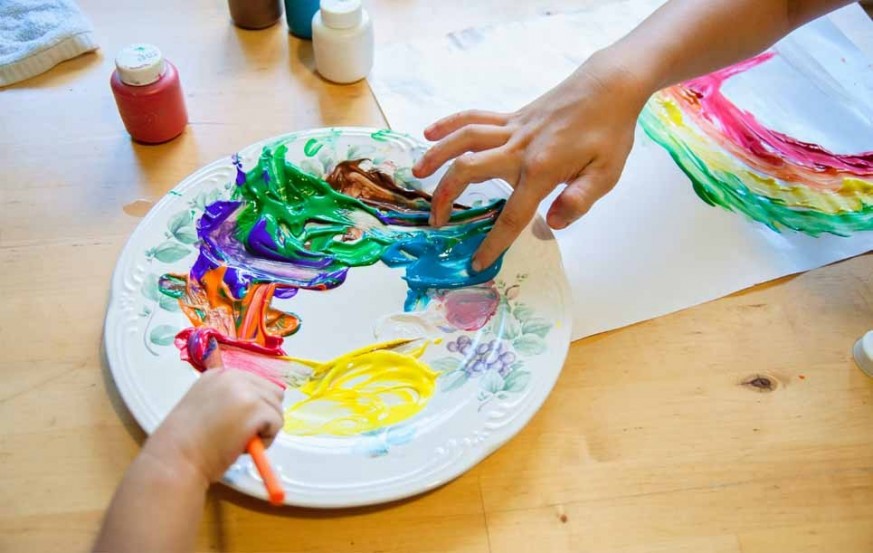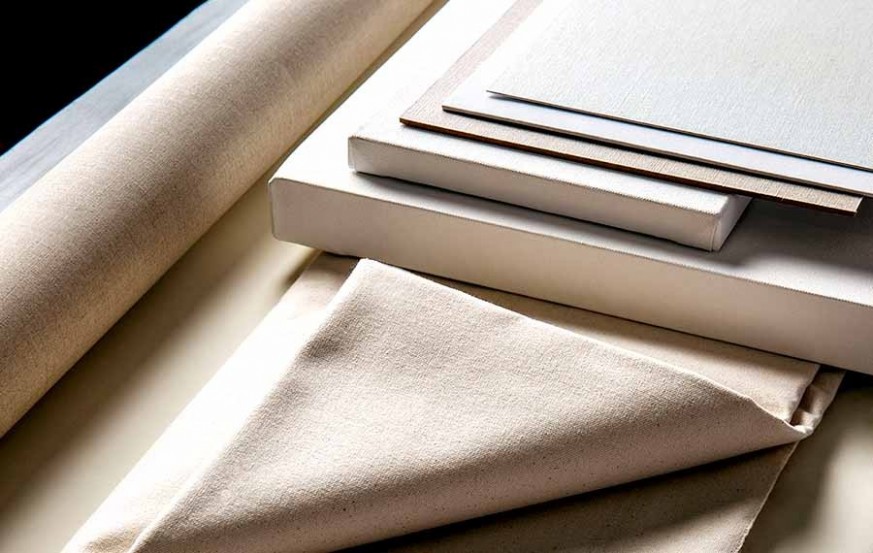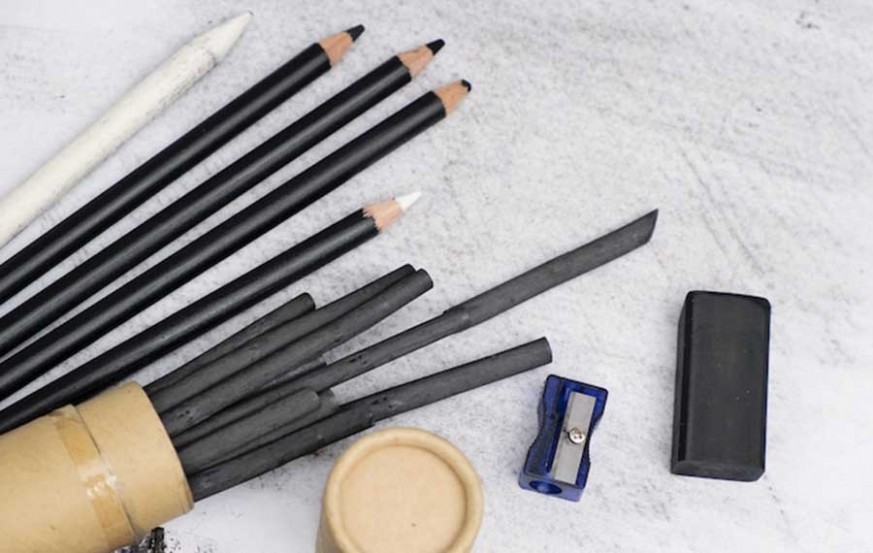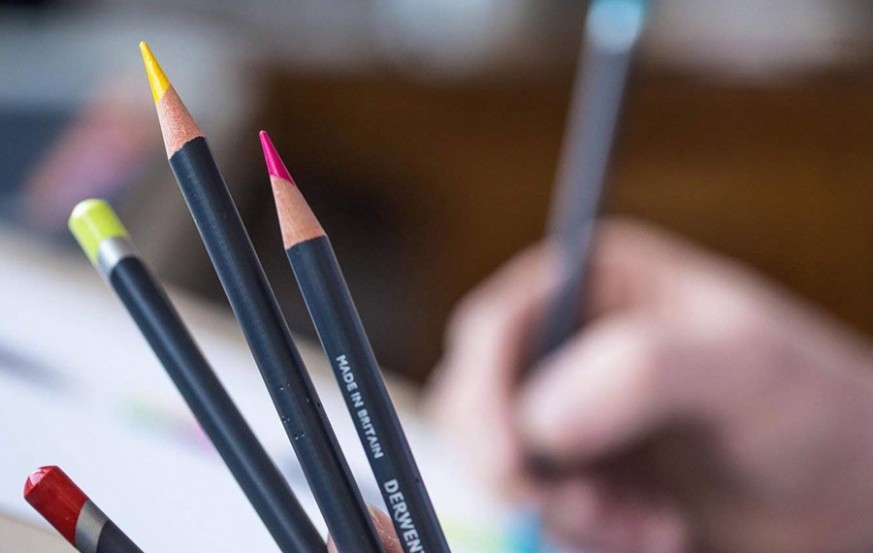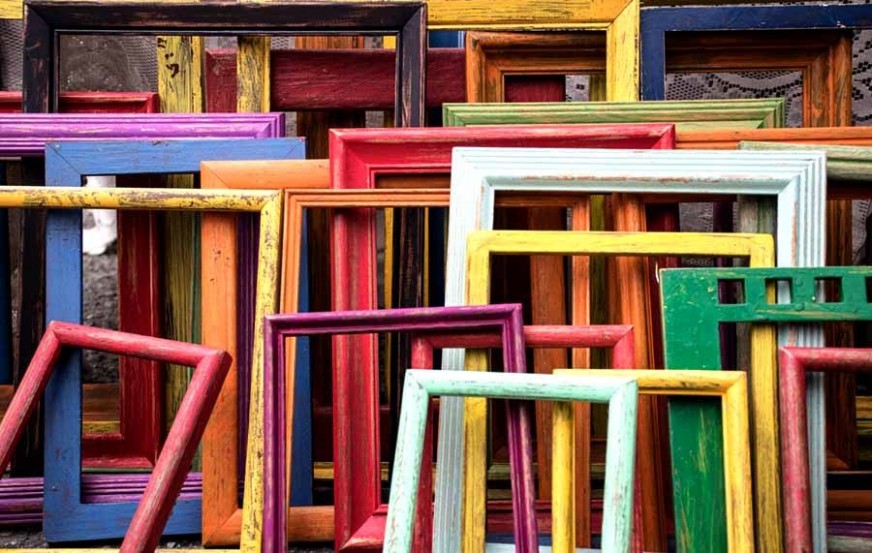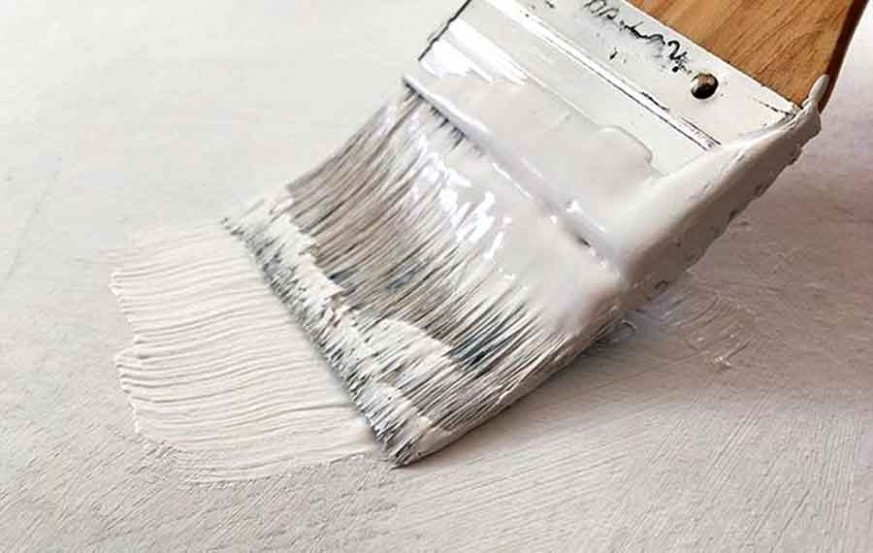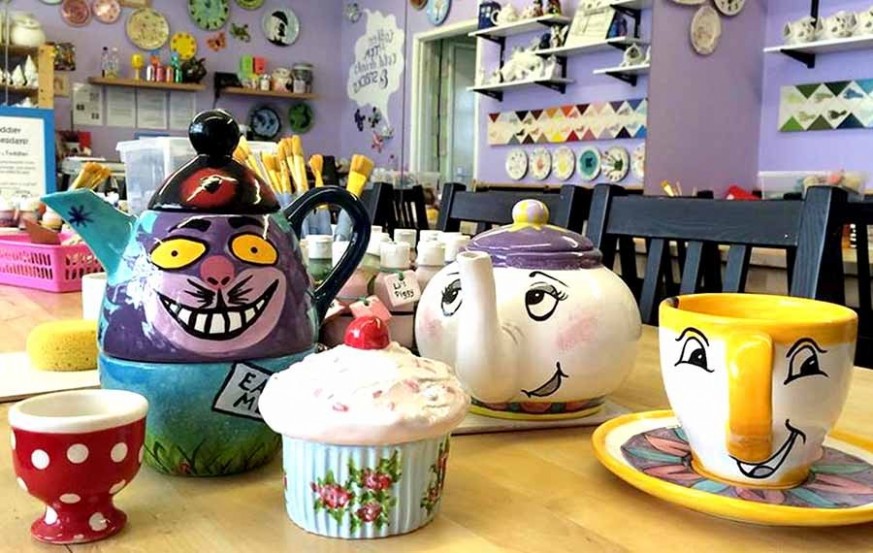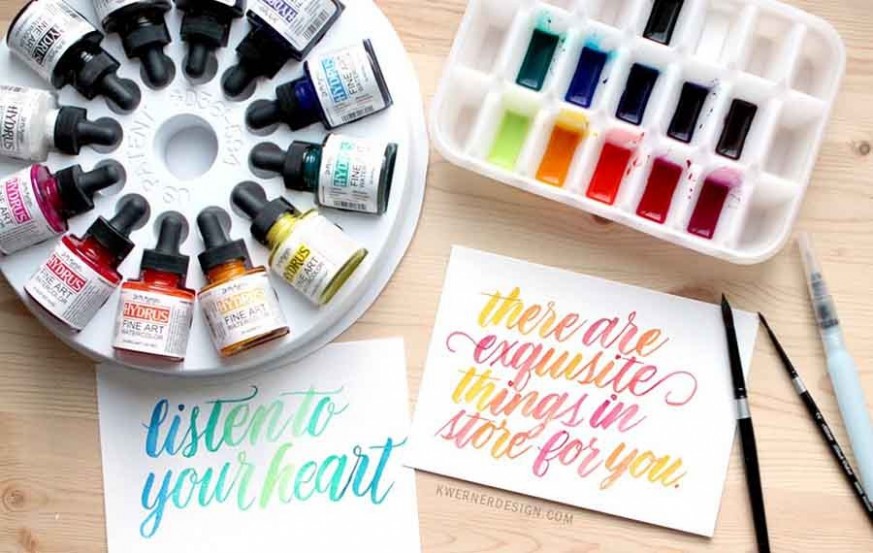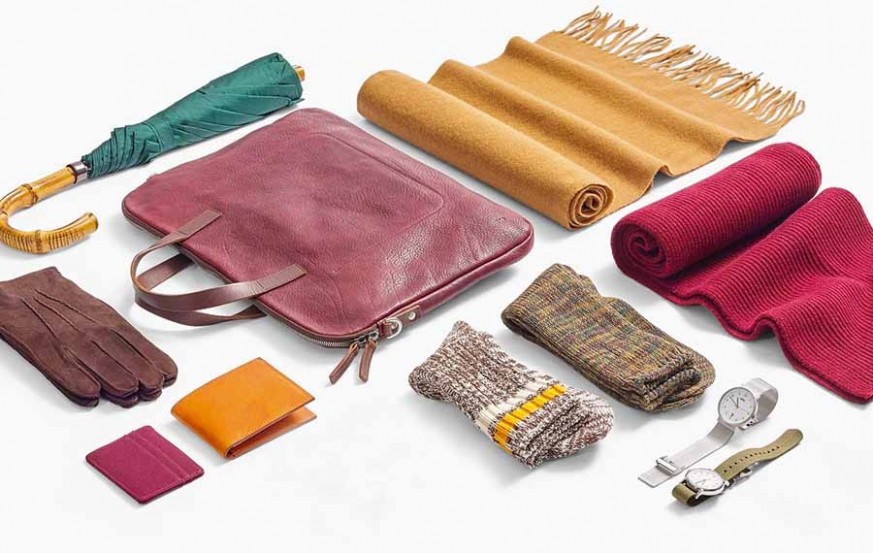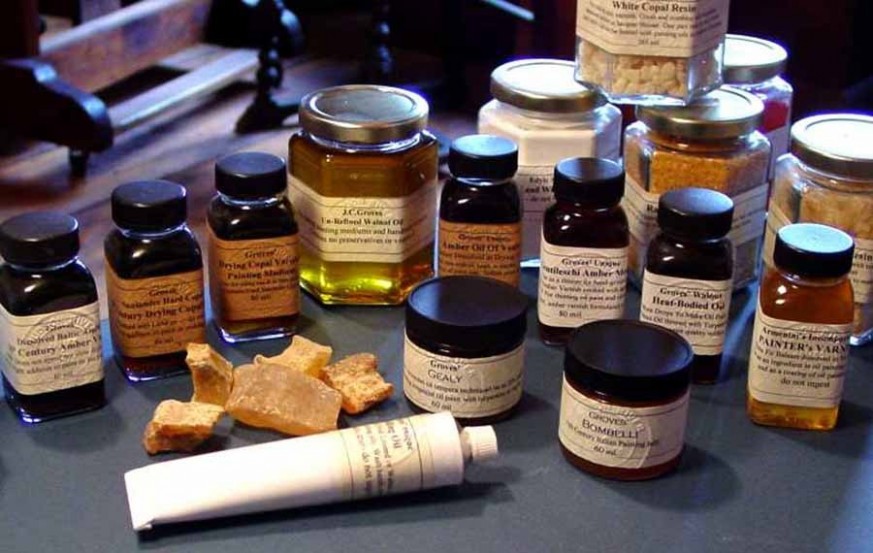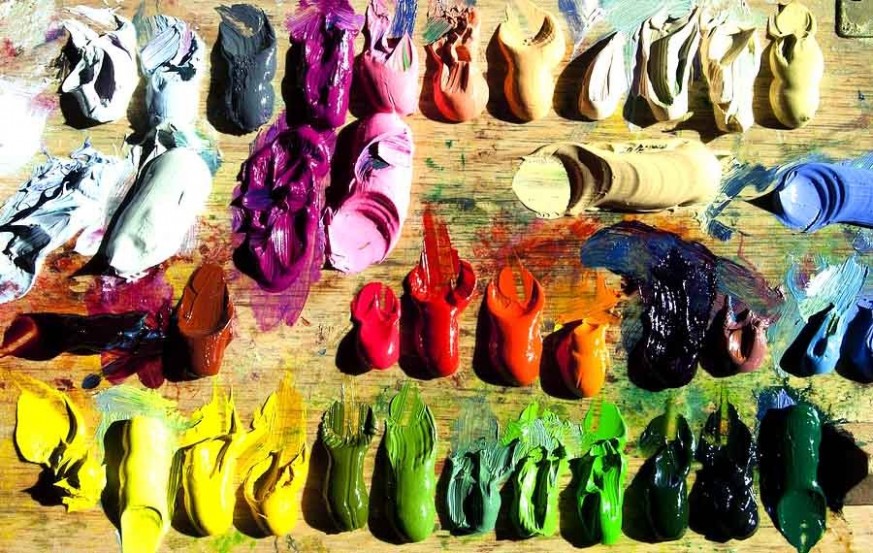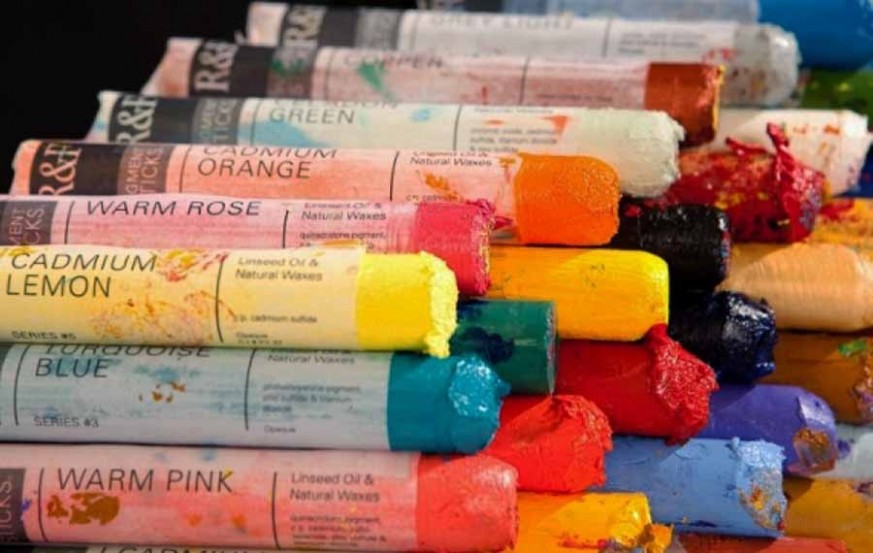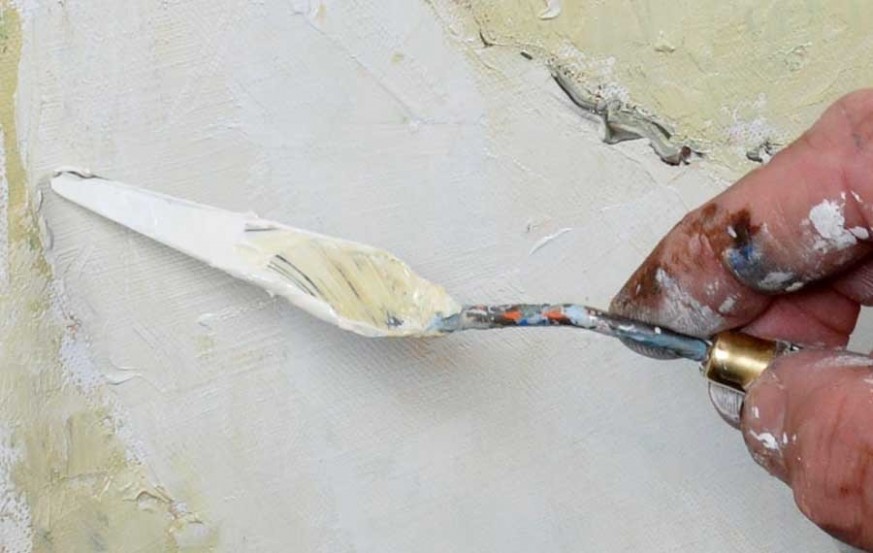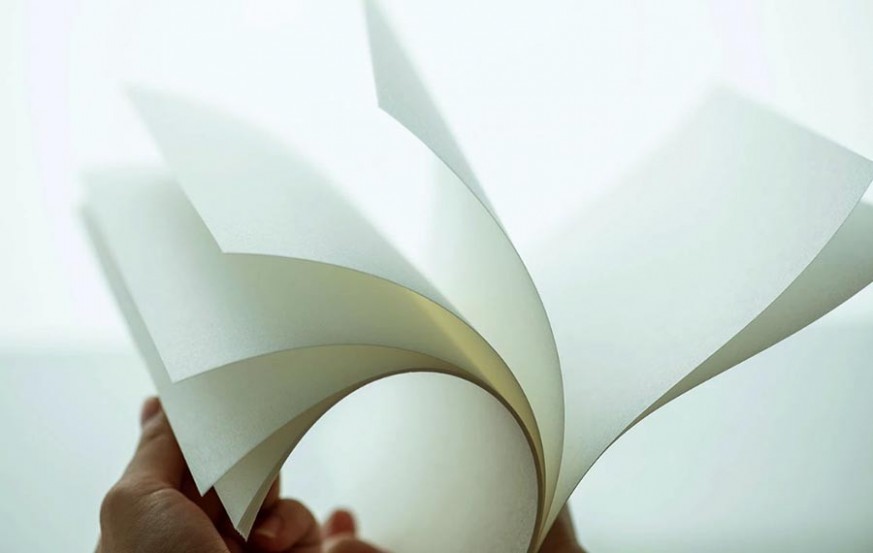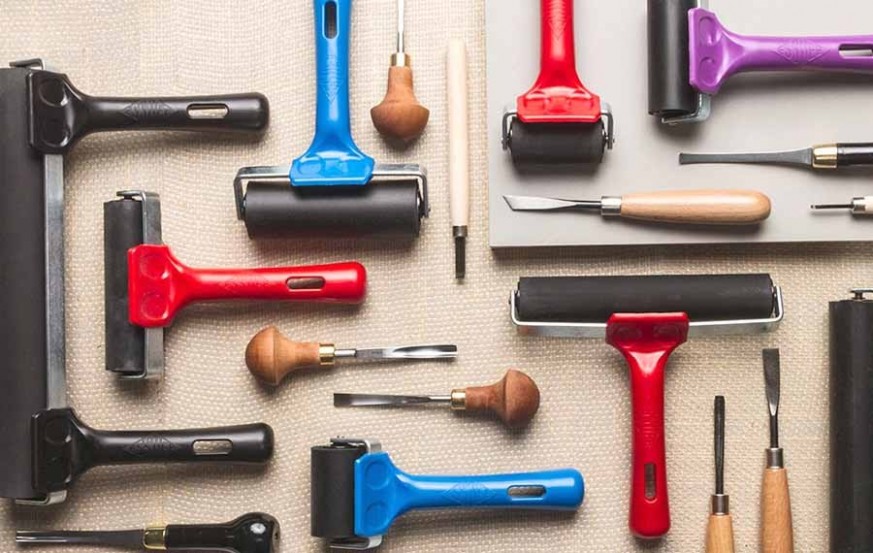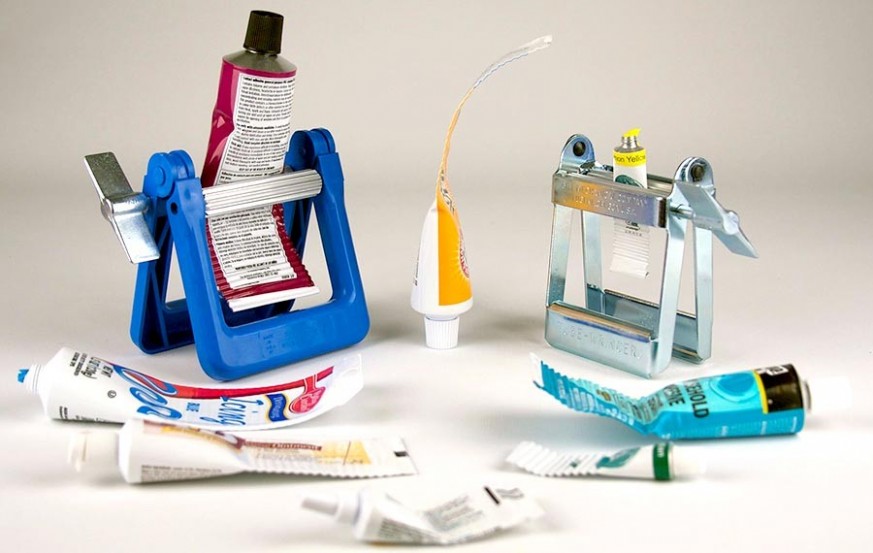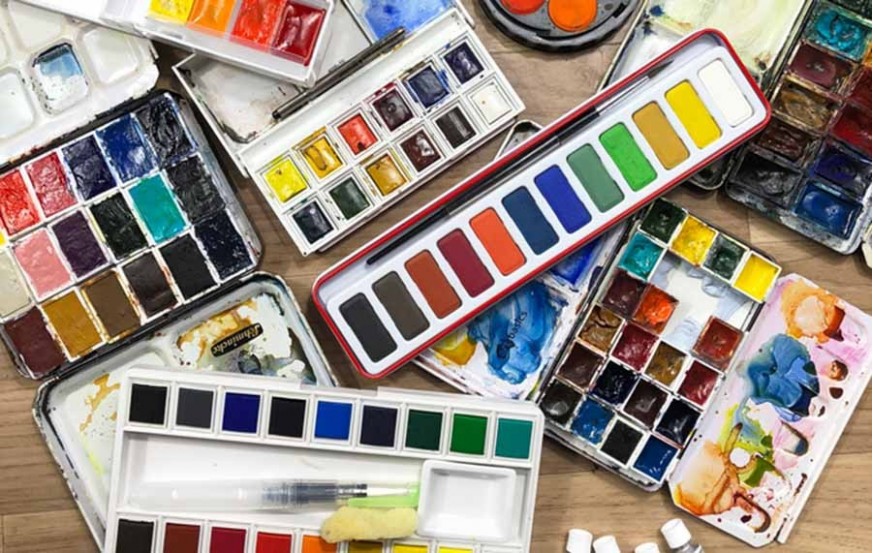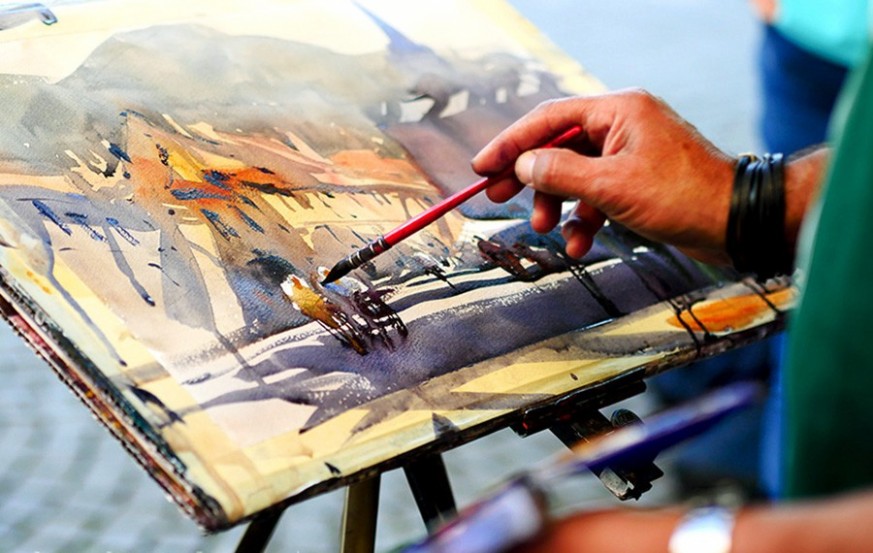Opulence. Encaustic is perhaps the most beautiful of all artists' paints, and it is as versatile as any 21st century medium. It can be polished to a high gloss, carved, scraped, layered, collaged, dipped, cast, modeled, sculpted, textured, and combined with oil. It cools immediately, so that there is no drying time, yet it can always be reworked.
Wax is its own varnish. Encaustic paintings do not have to be varnished or protected by glass because encaustic, which is the most durable of all artists' paints, is its own protector. This is because beeswax is impervious to moisture, which is one of the major causes of deterioration in a paint film. Wax resists moisture far more than resin varnish or oil. Buffing encaustic will give luster and saturation to color in just the same way resin varnish does.
No yellowing. Encaustic paint will not yellow or darken. However, wax itself is photoreactive, so unpigmented encaustic medium that has been kept in dark storage will darken slightly. When re-exposed to light that darkening will bleach out.
No solvents. Encaustic paint does not require the use of solvents. As a result, a number of health hazards are reduced or eliminated.
Shopping Cart
No products
Prices are tax included
Shop by Category
Subcategories
Juan to Paint Package
At Juan to Paint, now open in Ali Mall, we’re all about helping you unwind, have fun, and maybe discover a talent you never knew you had.
Here’s the deal:
• No stress, no pressure—just you, your canvas, and a chance to let loose.
• Affordable sessions so you can save cash for your next masterpiece.
• Chill vibes and tips from our in- house artist. We all need a little nudge sometimes.
Ready to experience, discover and explore?
Call us now at +639474724926 to book your spot.
You bring the energy, we’ll bring the paint. Let’s make a masterpiece—or at least a fun mess!
Acrylic Medium
Acrylic medium is the same formulation as acrylic paint, minus the pigment. It can be used as a paint additive, an adhesive, and a texturizer. It also can be used to create image transfers. It comes in three basic weights (medium, gel, and paste) and two finishes (matte and gloss). The different weights and finishes are inter-mixable, so you if you cannot find exactly what you need, or you are on a budget, you can create it using two or more products.
Medium is the thinnest of the acrylic mediums. It is easily pourable, with a consistency like that of cream. It works well as an adhesive and for creating image transfers. It can also be added directly to acrylic paints, to extend them or to alter the consistency, transparency, and finish.
Gel is thicker than medium. It is pourable, with a consistency like that of thin yogurt or kiefer. It works well as an adhesive and for creating image transfers. Gel can also be added directly to paint to alter consistency and transparency. It can also be applied to the surface prior to painting, to create texture.
Paste is the thickest of the acrylic mediums. It is too thick to pour, with a consistency like pudding. Depending on the manufacturer, it may be called either molding paste or modeling paste. While mediums and gels dry clear, paste may contain fillers that make it opaque. Paste is a good way to build up surface texture, prior to painting. It can also be mixed with acrylic paints, though be aware that its opacity will alter the look of the paint.
Acrylic Paint
Airbrush & Compressor
An airbrush is a small, air-operated tool that sprays various media including ink and dye, but most often paint by a process of nebulization. Spray guns developed from the airbrush and are still considered a type of airbrush.
Art & Crafts
Arts and crafts describes a wide variety of activities involving making things with one's own hands. Arts and crafts is usually a hobby. Some crafts (art skills) have been practised for centuries, others are more recent inventions. William Morris, John Ruskin and others promoted an "arts and crafts" movement in the late 19th century, which popularized the phrase.
Both children and adults enjoy arts and crafts. Children in schools may learn skills such as woodworking, wood carving, sewing, or making things with all sorts of material. Many community centres and schools have evening or day classes and workshops where one can learn arts and craft skills
Brush
Paintbrushes are used for applying ink or paint. These brushes are usually made by clamping the bristles to a handle with a ferrule.
Short handled brushes are for watercolor or ink painting while the long handled brushes are for oil or acrylic paint. The styles of brush tip seen most commonly are:
- Round: Long closely arranged bristles for detail
- Flat: For spreading paint quickly and evenly over a surface. They will have longer hairs than their Bright counterpart.
- Bright: Flat brushes with short stiff bristles, good for driving paint into the weave of a canvas in thinner paint applications, as well as thicker painting styles like impasto work.
- Filbert: Flat brushes with domed ends. They allow good coverage and the ability to perform some detail work.
- Fan: For blending broad areas of paint.
- Angle: Like the Filbert, these are versatile and can be applied in both general painting application as well as some detail work.
- Mop: A larger format brush with a rounded edge for broad soft paint application as well as for getting thinner glazes over existing drying layers of paint without damaging lower layers.
- Rigger: Round brushes with longish hairs, traditionally used for painting the rigging in pictures of ships. They are useful for fine lines and are versatile for both oils and watercolors.
THE STRUCTURE OF AN ARTIST PAINT BRUSH
The artist paint brushes used for oil painting consist of the ferrule, the handle and the bristles. The ideal material for the handle is a hardwood from one of the deciduous species of tree. A particularly suitable type of wood is beech, which has a very low water uptake. This means that the wood keeps its shape, and a good connection between the handle and the ferrule can be maintained.
The ferrule on a high-quality brush must be free of welds or joints, made of copper or brass and fit snugly around the handle, so that there are no air-pockets between the two. The bristles are the working part of the brush and, it’s fair to say, the most important part, for it is based on the bristles that an artist selects the right brush for any given painting. They may be made of natural materials or synthetic fibres, and they come in various shapes and sizes.
HOW TO CHOOSE A BRUSH DEPENDING ON THE MATERIAL
Brushes made with natural bristles
These are the most common brushes and the ones most often used by artists. They are made of hog’s hair and are considered to be among the best kinds of brush for oil painting. Natural bristles pick up the paint very well and apply the load to the canvas well. Making a brush with natural bristles is a fairly complicated procedure. The bristles are boiled and bleached and then any split ends are removed.
Kolinsky sable-hair brushes
A kolinsky is a small carnivorous animal, similar to a ferret. These brushes, like those made of hog’s hair, are natural paintbrushes and are commonly used to create watercolours and oil paintings. Sable-hair brushes are usually used by artists who like to paint in thin, translucent layers. Sable-hair brushes provide soft, subtle strokes, making them ideally suited for portrait-painting and for all the fine detail in a painting. Artist brushes made of sable-hair will last a long time, if you use a fine-grained canvas. When using a medium-grained canvas, meanwhile, you’ll find you can wipe off any stray bristles from the brush more quickly. Natural sable-hair brushes are also suitable for the ‘drybrush’ painting technique.
Synthetic brushes
One hears various things said about synthetic brushes for oil painting, and the feedback about them is mixed. With the emergence of good-quality brushes made with synthetic fibres, however, novice painters are increasingly shunning brushes with natural bristles. Good synthetic brushes can sometimes be on a par with natural brushes. Synthetic brushes are now available with varying degrees of bristle thickness, enabling artists to choose their brush depending on the task at hand. Thick synthetic bristles are suitable for doing the undercoat and for the fast alla prima painting technique (as are brushes made of natural bristles). Thin synthetic bristles, on the other hand, are similar to natural sable-hair brushes. They can be used to paint paintings consisting of lots of thin layers. By comparison with brushes made of hog’s hair and sable-hair, synthetic brushes have both upsides and downsides. The bristles don’t fall out of them. They are easier to look after (thinning agents, diluents and linseed oil all affect natural brushes in different ways). They last longer and are suitable for any canvas, however finely or coarsely grained. Some brushes made with synthetic fibres may lose their shape over time and become bushy. There are loads of suggestions to be found on the Internet, though, about how to solve this problem and get the brush back to its original shape.
Squirrel-hair brushes
These brushes are not used in oil painting, or at least not widely used. Some artists use these brushes to lend a light tint to the paint. This is purely a matter of personal preference and habit, though. Squirrel-hair brushes are perfect for painting with watercolours, but when used with oil they quickly become unfit for use. Paintbrushes are among the most important tools of all in an artist’s hands. But an even more important factor is whether the artist knows how to use them and look after them.
Canvas & Boards
Extremely heavy-duty plain-woven fabric used for making sails, tents, backpacks, and other functions where sturdiness is required. It is also popularly used as a painting surface, typically stretched.
Early canvas was made of linen, sturdy brownish fabric of considerable strength. Linen is particularly suitable for the use of oil paint. In the early 20th century, cotton canvas, often referred to as "cotton duck", came into use. Linen is composed of higher quality material, and remains popular with many professional artists, especially those who work with oil paint. Cotton duck, which stretches more fully and has an even, mechanical weave, offers a more economical alternative. The advent of acrylic paint has greatly increased the popularity and use of cotton duck canvas. Linen and cotton derive from two entirely different plants, the flax plant and the cotton plant.
Charcoal, Graphite Stick & Pencils
Artists' charcoal is a form of dry art medium made of finely ground organic materials that are held together by a gum or wax binder or produced without the use of binders by eliminating the oxygen inside the material during the production process. These charcoals are often used by artists for their versatile properties, such as the rough texture that leaves marks less permanent than other art media.[2] Charcoal can produce lines that are very light or intensely black, while being easily removable, yet vulnerable to leaving stains on paper. The dry medium can be applied to almost any surface from smooth to very coarse. Fixatives are often used with charcoal drawings to solidify the position to prevent erasing or rubbing off of charcoal dusts.
Pencil drawing, drawing executed with an instrument composed of graphite enclosed in a wood casing and intended either as a sketch for a more elaborate work in another medium, an exercise in visual expression, or a finished work. The cylindrical graphite pencil, because of its usefulness in easily producing linear gray-black strokes, became the successor of the older, metallic drawing stylus, with which late medieval and Renaissance artists and tradesmen sketched or wrote on paper, parchment, or wood.
Although graphite was mined in the 16th century, the use by artists of pieces of natural graphite, inserted in a porte-crayon (“pencil holder”), is not known before the 17th century. Then minor graphite details were included in sketches, notably in landscape renderings by Dutch artists. During that century and most of the 18th, graphite was used to make preliminary sketch lines for drawings to be completed in other media, but drawings completely finished with graphite were rare.
Although pencil drawings were much less commonly produced by artists of those centuries than sketches in chalks, charcoal, and pen and ink, the use of graphite gradually increased among painters, miniaturists, architects, and designers. By the late 18th century, an ancestor of the modern pencil was constructed in the form of a rod of natural graphite fitted into a hollow cylinder of wood. Not until 1795, however, did the French inventor Nicolas-Jacques Conté devise a method of producing pencil rods from mixtures of graphite and clays, a true prototype of the modern graphite pencil. Conté’s technical improvement made possible the production of fine pencils the strokes of which could be controlled, varying from type to type in softness and hardness, darkness and lightness. These excellent quality graphite pencils encouraged wider use by 19th-century artists, and pencil drawing became commonly used for studies and preliminary sketches. The graphite pencil could be used on almost any type of drawing surface, a fact that helped make it indispensable in the artist’s studio.
Colored & Watercolor Pencils
A colored pencil (American English), coloured pencil (Commonwealth English), pencil crayon, lead or coloured/colouring lead (Canadian English, Newfoundland English) is an art medium constructed of a narrow, pigmented core encased in a wooden cylindrical case. Unlike graphite and charcoal pencils, colored pencils’ cores are wax- or oil-based and contain varying proportions of pigments, additives, and binding agents. Water-soluble (watercolor) pencils and pastel pencils are also manufactured as well as colored leads for mechanical pencils.
Colored pencils vary greatly in terms of quality and usability; concentration of pigments in the core, lightfastness of the pigments, durability of the colored pencil, and softness of the lead are some indicators of a brand’s quality and, consequently, its market price. There is no general quality difference between wax/oil-based and water-soluble colored pencils, although some manufacturers rate their water-soluble pencils as less lightfast than their similar wax/oil-based pencils. The rising popularity of colored pencils as an art medium sparked the beginning of the Colored Pencil Society of America (CPSA). According to its website, “[CPSA] was founded in 1990 as a nonprofit organization dedicated to artists over 18 years of age working with colored pencil”. The CPSA not only promotes colored pencil art as fine art, but also strives to set lightfastness standards for colored pencil manufacturers. Other countries such as the United Kingdom, United States, Canada, Australia and Mexico – among many others – have formed their own organizations and societies for colored pencil artists. Colored pencils are commonly stored in pencil cases to prevent damage.
Despite colored pencils' existence of more than a century, the art world has greatly treated the medium with less admiration and even disdain compared to other art mediums. However, the discovery of new techniques and methods and the formation of authoritative organizations is better enabling colored pencils to compete with other mediums. Additionally, colored pencils are more affordable, cleaner, and simpler compared to other mediums.
Easel
Easel refers to a portable stand or frame commonly of wood serving required to hold a canvas upright for the painter’s convenience or for the sake of displaying something. Easel Picture or an Easel Piece is essentially a painting of reasonable size as distinguished from a painting on a wall or ceiling. An easel can be of full height which can stand by itself on the floor. Shorter Easels are also in vogue which can be used on a table. Easels are usually made of wood, aluminum or steel.
French Sketch Box Easel. This easel was designed to allow painters on the go to be prepared. Made handsome, quality elm wood with long-lasting hardware, it folds to a compact size and doubles as a carrier for a wet canvas.
Encaustic Paint
What is Encaustic Paint
Encaustic is a wax based paint (composed of beeswax, resin and pigment), which is kept molten on a heated palette. It is applied to an absorbent surface and then reheated in order to fuse the paint. The word ‘encaustic’ comes from the Greek word enkaiein, meaning to burn in, referring to the process of fusing the paint. Although they come from the same root word, ‘encaustic’ should not be confused with ‘caustic,’ which refers to a corrosive chemical reaction. There is no such hazard with encaustic.
Face & Body Colors
Modern water-based face and body paints are made according to stringent guidelines, meaning these are non-toxic, usually non-allergenic, and can easily be washed away. Temporary staining may develop after use, but it will fade after normal washing. These are either applied with hands, paint brush, and synthetic sponges or natural sea sponge, or alternatively with an airbrush.
Framing & Packaging
If something like a picture or a piece of art is valuable to you and you are proud to be part of it or be associated with it, then it needs to be framed and hung somewhere in your home for display. Some people opt to simply buy a picture frame from a home decor or craft store and hang it with a nail, while others find it enticing to frame their own pictures. The process may take several hours, and requires several tools and other picture hanging materials, but the final outcome will be something extravagant and personal.
Gesso & Grounds
Modern acrylic "gesso" is actually a combination of calcium carbonate with an acrylic polymer medium latex, a pigment and other chemicals that ensure flexibility, and ensure long archival life. It is sold premixed for both sizing and priming a canvas for painting. While it does contain calcium carbonate (CaCO3) to increase the absorbency of the primer coat, Titanium dioxide or titanium white is often added as the whitening agent. This allows the "gesso" to remain flexible enough to use on canvas. High concentrations of calcium carbonate, or substandard latex components will cause the resulting film to dry to a brittle surface susceptible to cracking. Typically, a canvas should be sized prior to being gessoed, as a sizing coat will sink into the substrate to support it as opposed to a gesso coat which is just put on top of the substrate.
Acrylic gesso can be colored, either commercially by replacing the titanium white with another pigment, such as carbon black, or by the artist directly, with the addition of an acrylic paint. Acrylic gesso can be odorous, due to the presence of ammonia and/or formaldehyde which are added in small amounts as preservatives against spoilage.
Gold & Metal Leaf
Gilding is any decorative technique for applying a very thin coating of gold to solid surfaces such as metal (most common), wood, porcelain, or stone. A gilded object is also described as "gilt". Where metal is gilded, it was traditionally silver in the West, to make silver-gilt (or vermeil) objects, but gilt-bronze is commonly used in China, and also called ormolu if it is Western. Methods of gilding include hand application and gluing, typically of gold leaf, chemical gilding, and electroplating, the last also called gold plating. Parcel-gilt (partial gilt) objects are only gilded over part of their surfaces. This may mean that all of the inside, and none of the outside, of a chalice or similar vessel is gilded, or that patterns or images are made up by using a combination of gilt and ungilted areas.
Gilding gives an object a gold appearance at a fraction of the cost of creating a solid gold object. In addition, a solid gold piece would often be too soft or too heavy for practical use. A gilt surface also does not tarnish as silver does.
Ink & Calligraphy
Modern calligraphy ranges from functional inscriptions and designs to fine-art pieces where the letters may or may not be readable. Classical calligraphy differs from typography and non-classical hand-lettering, though a calligrapher may practice both.
Leather & Fabric Paint
Safe. Acid Free. Odour Free. The new Derivan FabricArt range of twin tipped fabric markers are an easy and safe way to decorate fabric. With a range of standard and fluorescent colours that will enhance any creative project.
These versatile twin tipped markers are perfect for decorating and adding a touch of colour and personality to most fabric surf aces. You can now customise t-shirts, jeans, shoes, cushion covers, carry bags and more with illustrations, type, drawings, thoughts or writings, quick and easy …the possibilities are infinite.
Available in a range of 13 bold colours with a double-ended tip (pointed and chisel broad) to help create lines of varying widths adding versatility and a dynamic finish to any design - use them for detailed work, to outline letters or for wide strokes of colour. They are Acid free and odour free.
New Derivan FabricArt Marker’s colours are transparent and matt when dry, they resist fading on most fabrics and are wash resist during normal wash cycles after they are heat fixed.
Application
For best results wash and iron beforehand to remove any sizing. Allow the fabric to dry. The markers will work on cotton, polyester and most fabrics. Please note that colours may not show up on dark coloured fabrics.
It is prudent to do a test piece prior to embarking on a large project.
Place the fabric to be decorated on top of a piece paper or cardboard to prevent the markers from bleeding through the cloth. If you are drawing on a T-shirt, place the paper inside the shirt, between the front and back sections. Lay the fabric out on any work surface so it is smooth. It is best to tape the edges to hold the fabric in place while you work.
Colour your material using a plenty of ink. Light marks are more likely to wash out. Saturating the fabric well will guarantee the colour will remain on the fabric. Put aside your creation to let it dry before you set the design with heat. Drying times may range from just a few minutes to an hour or more, depending on how thoroughly you have covered your fabric. Test the surface of the paint to ensure it is dry.
Heat Fixing:
Set the markers by using either an iron or clothes dryer.
Iron: With an iron on cotton setting – press over the design slowly for about 2 to 3 minutes on the reverse side of the fabric. Move the hot iron over the surface evenly.
Dryer: If you prefer to use the dryer, tumble dry on high for about an hour and a half. Tumble dry only the items you have coloured with your fabric markers in the same load to avoid staining other clothing.
Washing:
Allow 48 hrs. after fixing before washing. Gentle machine-washing in cold water is best. Do not use bleach. Hang to dry.
Oil Medium
Resin-based thinners that allow the artist to superpose layers of paint more rapidly without the new colours soaking through to the ones underneath. They also ensure that the painting dries better to the core and increase the suppleness of the paint film over time, thus delaying the appearance of cracks. With different combinations, artists can increase or decrease the setting time, change the shading, texture and adjust the brightness and transparency of their work. When using oil paint, be careful never to paint too lean (dilute with solvents instead of mediums): when the varnish is applied, the picture varnish will fusion with the paint layer. The consequences are serious because any future varnish removal and restoration will become impossible.
Oil Paint
Many artists today consider oil painting to be the fundamental art medium; something that a student should learn to appreciate, because of its properties and use in previous, very popular artwork. Typical qualities of oil paint include a long "open time," which means that the paint does not dry quickly. Oil paints take several weeks to dry, this allows the artist to work on a painting for many sessions. Oil paint also has a propensity to blend into surrounding paint allowing very subtle blending of colors. This medium also produced vivid color with a natural sheen and distinct contrast. Oil paints have a surface translucency similar to human skin, making it an ideal medium for portraits.
The color of oil paint derives from the small particles mixed with the carrier. Common pigment types include mineral salts such as white oxides: lead, now most often replaced by less toxic zinc and titanium, and the red to yellow cadmium pigments. Another class consists of earth types, e.g. sienna or umber. Synthetic pigments are also now available. Natural pigments have the advantage of being well understood through centuries of use but synthetics have greatly increased the spectrum available, and many are tested well for their lightfastness.
Oil Stick
Oil stick, or oilstick, is an art medium for applying color. It is produced in a stick form similar to that of a crayon or oil pastel. It is distinguished from oil pastel, to which it may appear similar, in that theoil used is comparatively volatile, causing a skin to develop on exposed surfaces. Oil sticks are oil paint in solid form. Oil sticks are made by compressing wax and oil until it forms into an oil stick. The same basic pigments and drying oils that are used in the formulation of tube paint are combined with wax and rolled into a crayon. Oil sticks can be used to concur drawings, paintings, and sketches. It is not a common medium nor a much used medium however is highly effective in art.
Markers & Pens
A marker pen, fineliner, marking pen, felt-tip marker, felt-tip pen, flow marker, texta (in Australia), sketch pen (in India) or koki (in South Africa), is a pen which has its own ink source and a tip made of porous, pressed fibers such as felt.
A permanent marker consists of a container (glass, aluminum or plastic) and a core of an absorbent material. This filling serves as a carrier for the ink. The upper part of the marker contains the nib that was made in earlier time of a hard felt material, and a cap to prevent the marker from drying out. Until the early 1990s, the most common solvents that were used for the ink were toluene and xylene.
These two substances are both harmful and characterized by a very strong smell. Today, the ink is usually made on the basis of alcohols (e.g. 1-Propanol, 1-butanol, diacetone alcohol and cresols). Markers may be waterproof, dry-erase, wet-erase (e.g. transparency markers), or permanent.
Painting Varnish Brush/Spray
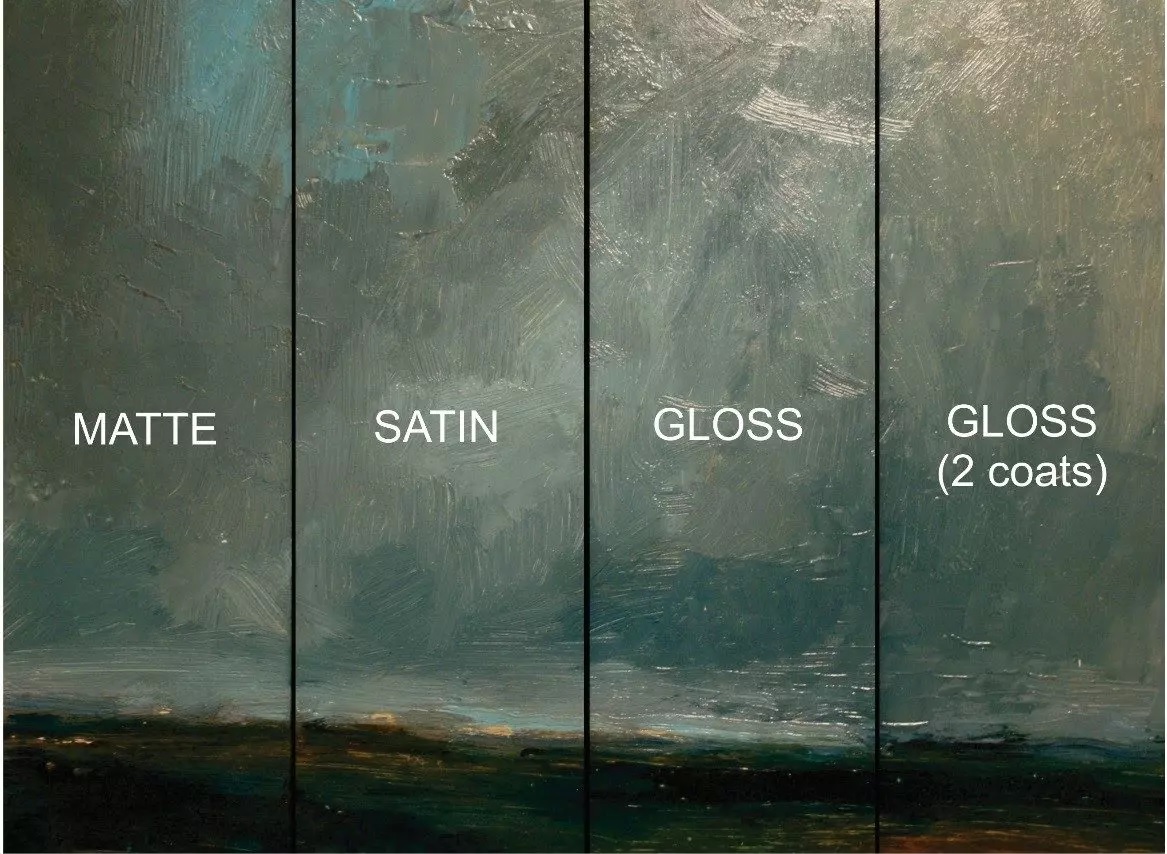
Golden MSA Spray Varnish MSA Varnish (Gloss) dries to a highly reflective finish. MSA Varnish (Satin) offers moderate reflection, similar to most matte varnishes. MSA Varnish (Matte) finish is exceptionally flat. The different finishes can be intermixed, or used sequentially, to achieve the desired sheen. Note that the matte and satin MSA varnishes will lighten dark value colors, which is typical of reduced sheen varnishes with UVLS (Ultra Violet Light Stabilizers) dry to a tough, yet flexible protective finish. The UVLS system provides increased resistance to the harmful effects of ultraviolet radiation, making the product suitable for exterior as well as interior application.
Grumbacher Oil & Acrylic Picture Varnish A final varnish and protective coating for dry oil and acrylic paintings available in gloss or matte. Protects oil and acrylic paintings from dirt, moisture and scuffing. Non-yellowing, flexible, and quick-drying. It is crystal clear when applied. Can be easily removed with Pure Gum Spirits of Turpentine, Grumtine™, or Odorless Paint Thinner.
Grumbacher Adhesive Spray can be used as a repositionable or permanent. Appropriate for porous and non-porous materials including paper, wood, metal and cloth. Permanent bond is created for porous materials by spraying surface and adhering porous material immediately before adhesive dries. Permanent bond is created for non-porous materials by spraying surface and letting adhesive dry for one minute before bonding. For all temporary bonds, spray surface and allow adhesive to dry for at least five minutes before making bond with porous and non-porous materials. Archival when used as directed.
Grumbacher Dammar Retouch Varnish use during intermediate stages of development in an oil painting to even out gloss of unfinished works, or revive sunken in or dry areas to aid in accurate color comparison for further painting. Can also be used to protect paintings before final varnishing. Transparent, quick-drying, clear, and glossy. Must dry completely before over-painting. When the surface of the painting is dry to the touch, one very light coat of retouch may be applied to it for protection against excessive dust. Use only in thin layers. If this coat produces a gloss, you have applied too much varnish. Not intended as a final varnish.
Grumbacher Dammar Varnish A colorless, genuine Damar Varnish for use as a final protective coating on thoroughly dry oil paintings. It brings out the beauty of colors with an even soft gloss or matte finish. Protects oil paintings from dirt, moisture and scuffing. Transparent, quick-drying and permanent. When properly used it will not 'bloom', or cloud with age. Designed to provide a uniformly fine mist. Easily removed with Pure Gum Spirits of Turpentine or Grumtine™. Not soluble in mineral spirits, petroleum solvents or any odorless paint thinners.
Grumbacher Final Fixative Workable fixative for dry media artwork such as charcoal, pastels, and pencil drawings. Can be used on paper, photographs, printed material, and ceramics. Non-yellowing, colorless and flexible. Fast-drying. Can be drawn over when dry. Provides a gloss or matte finish when dry.
Grumbacher Workable Fixative Workable fixative and surface preparation for works on paper, acetate, foil and glass. Allows non-porous surfaces to accept water-based media without beading up. Also fixed lower levels of water-based media to enable over-painting or layering without lifting. Non-glossy. Not intended as a final fixative.
Kuelox Fixative Colourless, Waterproof, Adhesive and not easy to turm yellow. Protect the surface of the pieces effectively and keep the original colour and texture. Suitable for Softpastel, Oil Pastel, Pencil, Colour pencil, Pen, Chalk, Crayon Watercolour Drawing.
Bob Ross Finishing Varnish This clear, glossy, quick-drying spray varnish enhances color and provides temporary protection until the oil painting is dry enough for a permanent varnish.
Weber Blue Label Reworkable Fixatif is a water-clear fixative prepared expressly for use on pastel and charcoal drawings. It gives maximum durability with the least change in tonal values. Blue Label dries to a matte finish that can be reworked.
Winsor & Newton Picture Varnish A final clear, non-yellowing varnish with a gloss or matte finish for the protection of oil, alkyd and acrylic paintings.
Winsor & Newton Dammar High Gloss Varnish A traditional general varnish with a high gloss finish for the protection of oil, alkyd and acrylic paintings.
Painting Tools & Accessories
Easels is most often used to hold up a painter's canvas or large sketchbook while the artist is working or to hold a completed painting for exhibition.
To learn the basics of figure drawing or just to have "standing around," a Wooden Manikin is a useful reference tool. These accurately proportioned figures adjust to assume most human positions. Each one has its own stand.
A Painting Palette, a flat surface on which a painter arranges and mixes paints. Every painters needs a painting palette.
The Color Wheel, is an important learning tool for artists of all ages. One side teaches color mixing, and the other side demonstrates color harmonies.
A Staple Gun or Gun Tacker is a hand-held machine used to drive heavy metal staples into wood, plastic, or masonry. Staple guns are used for many different applications and to affix a variety of materials, including insulation, house wrap, roofing, wiring, carpeting, upholstery, and hobby and craft materials.
Palette Knife
A palette knife is a blunt tool used for mixing or applying paint, with a flexible steel blade. It is primarily used for mixing paint colors, paste, etc., or for marbling, decorative endpapers, etc. The "palette" in the name is a reference to an artist's palette which is used for mixing oil paint and acrylic paints.
Art knives come primarily in two types:
- palette knife resembling a putty knife with a rounded tip, suited for mixing paints on the palette;
- painting knife with a pointed tip, lowered or "cranked" like a trowel, suited to painting on canvas.
While palette knives are manufactured without sharpened cutting edges, with prolonged use they may become "sharpened" by the action of abrasive pigments such as earth colors.
Palette knives are also used in cooking, where their flexibility allows them to easily slide underneath pastries or other items.
Papers, Pads & Journal
Paper that has a neutral or basic pH (7 or slightly greater). It can be made from any cellulose fiber as long as the active acid pulp is eliminated during processing. It is also lignin and sulfur free. Acid-free paper addresses the problem of preserving documents for long periods.
Paper made from wood-based pulp that has not had its lignin removed goes yellow and deteriorates over time. When exposed to light and/or heat, the molecules in the acidic paper will break down even faster. It was only in the 1930s that the effects of wood-pulp paper became known, when William Barrow (a librarian) published a report about the deterioration of acidic paper in the libraries. For fear of the gradual disintegration of written materials, measures have been taken to improve the quality of paper.
Pastels
Pastel sticks or crayons consist of pure powdered pigment combined with a binder. The exact composition and characteristics of an individual pastel stick depends on the type of pastel and the type and amount of binder used. It also varies by individual manufacturer.
Dry pastels have historically used binders such as gum arabic and gum tragacanth. Methyl cellulose was introduced as a binder in the twentieth century. Often a chalk or gypsum component is present. They are available in varying degrees of hardness, the softer varieties being wrapped in paper. Some pastel brands use pumice in the binder to abrade the paper and create more tooth.
Dry pastel media can be subdivided as follows:
- Soft pastels: This is the most widely used form of pastel. The sticks have a higher portion of pigment and less binder, resulting in brighter colors. The drawing can be readily smudged and blended, but it results in a higher proportion of dust. Finished drawings made with soft pastels require protecting, either framing under glass or spraying with a fixative to prevent smudging; hairspray also works, although caution should be taken, as fixatives may affect the color or texture of the drawing.[2] White chalk may be used as a filler in producing pale and bright hues with greater luminosity.[3]
- Pan pastels: These are formulated with a minimum of binder in flat compacts (similar to some makeup) and applied with special Soft micropore sponge tools. No liquid is involved. A 21st-century invention, pan pastels can be used for the entire painting or in combination with soft and hard sticks.
- Hard pastels: These have a higher portion of binder and less pigment, producing a sharp drawing material that is useful for fine details. These can be used with other pastels for drawing outlines and adding accents. Hard pastels are traditionally used to create the preliminary sketching out of a composition.[3] However, the colors are less brilliant and are available in a restricted range in contrast to soft pastels.
- Pastel pencils: These are pencils with a pastel lead. They are useful for adding fine details.
In addition, pastels using a different approach to manufacture have been developed:
- Oil pastels: These have a soft, buttery consistency and intense colors. They are dense and fill the grain of paper and are slightly more difficult to blend than soft pastels, but do not require a fixative. They may be spread across the work surface by thinning with turpentine.[4]
- Water-soluble pastels: These are similar to soft pastels, but contain a water-soluble component, such as Polyethylene glycol. This allows the colors to be thinned out to an even, semi-transparent consistency using a water wash. Water-soluble pastels are made in a restricted range of hues in strong colors. They have the advantages of enabling easy blending and mixing of the hues, given their fluidity, as well as allowing a range of color tint effects depending upon the amount of water applied with a brush to the working surface.
Printmaking
Printmaking is the process of creating artworks by printing, normally on paper. Printmaking normally covers only the process of creating prints that have an element of originality, rather than just being a photographic reproduction of a painting. Except in the case of monotyping, the process is capable of producing multiples of the same piece, which is called a print. Each print produced is considered an "original" work of art, and is correctly referred to as an "impression", not a "copy" (that means a different print copying the first, common in early printmaking). Often impressions vary considerably, whether intentionally or not. The images on most prints are created for that purpose, perhaps with a preparatory study such as a drawing. A print that copies another work of art, especially a painting, is known as a "reproductive print".
Prints are created by transferring ink from a matrix to a sheet of paper or other material, by a variety of techniques. Common types of matrices include: metal plates, usually copper or zinc, or polymer plates and other thicker plastic sheets for engraving or etching; stone, aluminum, or polymer for lithography; blocks of wood for woodcuts and wood engravings; and linoleum for linocuts. Screens made of silk or synthetic fabrics are used for the screen printing process. Other types of matrix substrates and related processes are discussed below.
Multiple impressions printed from the same matrix form an edition. Since the late 19th century, artists have generally signed individual impressions from an edition and often number the impressions to form a limited edition; the matrix is then destroyed so that no more prints can be produced. Prints may also be printed in book form, such as illustrated books or artist's books.
Sculpture & Pottery
Sculpture is the act or art of sculpturing or forming in a pliable material such as clay or wax. It is the visual shape and texture of something regarded aesthetically, especially the human face or form. While Modeling is an additive process, as opposed to carving, the other main sculptural teachnique, in which portions of a hard substance are cut away to reveal form. While modeling, the corrections are possible to do, and the result is like fired clay or preserved.
Modeling is essentially a building-up process in which the sculpture grows organically from the inside. Numerous plastic materials are used for modeling. The main ones are clay.Clay are the most common modeling materials, and the artist’s hands are the main tools.
Modeling is an ancient technique, as indicated by prehistoric clay figurines from Egypt and the Middle East.It is a material primarily composed of a grouping of clay minerals, and can be used as an art medium.It is a great way to model things. It can be found in art shops around the area. In clay sculpture, all materials is formed or deformed into a new, permanent shape that you want.
We have a a best quality of clay that uses nowadays. We have also available tools for your clay art which can form anything you want.
Tube Wringer
The Tube-Wringer® will be your main squeeze for any product packaged in squeezable tube containers — a Tube-Wringer® for every project, a Tube-Wringer® for every home.
You'll get up to one-third more for your money from every tube with the Tube-Wringer®. Squeeze the last drop of expensive caulk, glue, oil paint, caviar, anchovy paste, make-up, and toothpaste from the tubes.
For fun and a creative touch, use the Tube-Wringer® as a crimper for craft projects as well.
Watercolor
Watercolor painting has the reputation of being quite demanding; it is more accurate to say that watercolor techniques are unique to watercolor. Unlike oil or acrylic painting, where the paints essentially stay where they are put and dry more or less in the form they are applied, water is an active and complex partner in the watercolor painting process, changing both the absorbency and shape of the paper when it is wet and the outlines and appearance of the paint as it dries. The difficulty in watercolor painting is almost entirely in learning how to anticipate and leverage the behavior of water, rather than attempting to control or dominate it.
Watercolor paint consists of four principal ingredients:
- colorant, commonly pigment (an insoluble inorganic compound or metal oxide crystal, or an organic dye fused to an insoluble metal oxide crystal);
- binder, the substance that holds the pigment in suspension and fixes the pigment to the painting surface;
- additives, substances that alter the viscosity, hiding, durability or color of the pigment and vehicle mixture; and
- solvent, the substance used to thin or dilute the paint for application and that evaporates when the paint hardens or dries.
Watercolor Medium
Natural Rubber Pick-up An indispensable tool in the watercolorist's arsenal, use rubber cement pick-ups to cleanly remove liquid frisket and masking fluid from your watercolor paintings without damaging the paper underneath. Firm, textured rubber wafers can be reused again and again, unlike an eraser, and will not smudge your colors or mark up your paper as might happen if you just used a finger to remove frisket. Try a rubber cement pick-up today and you'll wonder how you ever painted in watercolors without one!
Golden MSA Spray Varnish Mineral Spirit Based Acrylic With UV Protection, Excellent for Ink Jet Prints, Pastels and Paintings. These sprays provide a superb protective finish for fine artworks that is removable for conservation purposes. Offers excellent dirt, dust and moisture resistance in a flexible film. Contains ultraviolet light filters and stabilizers to provide archival protection inhibiting light damage. The adjustable fan spray tip allows for precise atomization over the entire artwork. Adheres to a wide variety of surfaces and painting mediums including: acrylics, oils, alkyds, pastels, watercolors and temperas. Because the varnish is not waterbased it is perfect for ink jet prints because it won't migrate with waterbased inks and won't buckle most ink jet papers. Like with all products, testing is recommended. Dries rapidly. Made in the USA. Available in three finishes, Gloss, Matte and Satin.
Grumbacher Workable fixative and surface preparation for works on paper, acetate, foil and glass. Allows non-porous surfaces to accept water-based media without beading up. Also fixed lower levels of water-based media to enable over-painting or layering without lifting. Non-glossy. Not intended as a final fixative.
Kuelox Fixative Colourless, Waterproof, Adhesive and not easy to turm yellow. Protect the surface of the pieces effectively and keep the original colour and texture. Suitable for Softpastel, Oil Pastel, Pencil, Colour pencil, Pen, Chalk, Crayon Watercolour Drawing.
Grumbacher Miskit Liquid Frisket 559 is a fluorescent orange colored frisket, for use on hard-sized watercolor papers, photos, and other media, to mask areas that are meant to be painted once the dried frisket is removed. It washes out of pens and brushes with soap and water. 1.2 oz (35 ml) glass jar. This product contains latex.
Blue Label® Fixatif A water clear fixatif prepared expressly for use on pastel and charcoal drawings. Gives maximum durability and protection with the least change in tonal values. Dries to a matte finish which may be reworked.
Winsor & Newton Texture Medium Producing a textured finish for watercolors, this medium can be applied directly onto the paper, or mixed with watercolors first.
Winsor & Newton Colorless Art Masking Fluid A removable, colorless liquid, use it for masking areas of work that need protection when color is applied in broad washes. It is specifically designed for soft sized papers to avoid staining. Made from rubber and latex staining. Wash brushes immediately after use. 75 ml glass bottle.
Winsor & Newton Art Masking Fluid This liquid is applied to make areas resistant to watercolor. Has a slight yellow tint. Not recommended for use on damp or soft sized papers, or if yellow staining of paper is a risk (Instead use Colorless Art Masking Fluid). Made from latex. Do not dilute.
Winsor & Newton Blending Medium This medium slows the drying rate, allowing extra time for blending watercolors. As a result, it is particularly useful in hot climates. Dilute color with medium alone for maximum blending time.
Winsor & Newton Granulation Medium A medium that is known for giving a mottled or granular appearance to colors that usually give a smooth wash. For maximum effect, dilute color with medium alone.
Winsor & Newton Iridescent Medium Mix this medium with watercolors or apply it over a dry wash to give iridescent or glitter effects. It is particularly effective when mixed with transparent colors.
Winsor & Newton Lifting Preparation Apply the medium directly to paper and allow it to dry before painting. The preparation then allows dry washes, including staining colors, to be more easily lifted from paper with a wet brush. Ideal for making corrections.
Winsor & Newton Permanent Masking Medium A non-removable, transparent liquid mask, this medium is excellent for detail. It can be applied directly onto the paper, or mixed first with watercolors. Ensure that the fluid is thoroughly dry before overpainting. Wash brushes in warm, soapy water before using other colors.
























